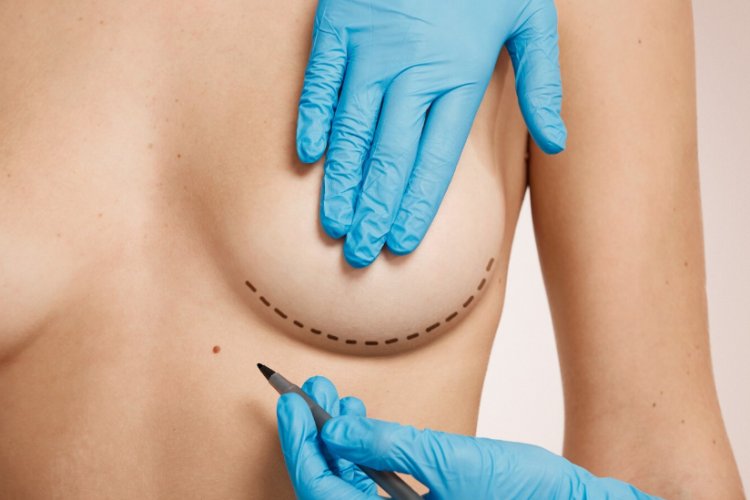Mamoplasty: A Comprehensive Overview
Mamoplasty, commonly referred to as breast surgery, encompasses various surgical procedures aimed at altering the size, shape, or appearance of the breasts. It is a field of plastic surgery that has witnessed significant advancements over the years, catering to both cosmetic and reconstructive needs. This article provides a comprehensive overview of mamoplasty, including its types, indications, surgical techniques, risks, and outcomes. #Mamoplasty #BreastSurgery #PlasticSurgery #CosmeticSurgery #BreastAugmentation #BreastReduction #BreastLift #BreastReconstruction #SurgicalProcedure #MedicalProcedure #Healthcare #BodyImage #SelfConfidence #Recovery #PatientSafety #UKClinics #TurkeyClinics

Types of Mamoplasty:
-
Augmentation Mamoplasty: This procedure involves enhancing the size and shape of the breasts using implants or fat transfer techniques. It is sought after by individuals desiring fuller breasts or those seeking reconstruction after mastectomy.
-
Reduction Mamoplasty: Also known as reduction mammoplasty, this procedure aims to decrease the size of overly large breasts, alleviating associated physical discomforts such as neck or back pain and improving overall breast aesthetics.
-
Mastopexy (Breast Lift): Mastopexy is performed to lift and reshape sagging breasts by removing excess skin and tightening the surrounding tissue. It restores a more youthful breast contour and may be combined with augmentation or reduction procedures as needed.
-
Reconstructive Mamoplasty: This type of mamoplasty is focused on rebuilding the breast mound following mastectomy, typically for breast cancer patients. Techniques may involve tissue expansion, flap reconstruction, or a combination of both.
Indications for Mamoplasty:
- Cosmetic Enhancement: Individuals seek mamoplasty to achieve their desired breast size, shape, or symmetry, enhancing self-confidence and body image.
- Correction of Congenital Deformities: Mamoplasty can address congenital conditions like Poland syndrome or tuberous breasts, which may cause psychological distress or functional impairment.
- Treatment of Breast Asymmetry: Discrepancies in breast size or shape can be corrected through augmentation, reduction, or lift procedures to achieve a more balanced appearance.
- Reconstruction After Mastectomy: Women who have undergone mastectomy due to breast cancer or other medical reasons may opt for reconstructive mamoplasty to restore breast form and function.
Surgical Techniques:
- Implant Placement: Augmentation mamoplasty involves inserting saline or silicone implants either beneath the chest muscle (submuscular) or directly behind the breast tissue (subglandular).
- Tissue Flap Reconstruction: In cases of breast reconstruction, tissue flaps sourced from the patient's abdomen, back, or thighs may be utilized to create a new breast mound.
- Lipofilling: Also known as fat grafting, this technique involves harvesting fat from one part of the body via liposuction and injecting it into the breasts to add volume or improve contour.
Risks and Complications:
Like any surgical procedure, mamoplasty carries certain risks, including infection, bleeding, adverse reactions to anesthesia, implant rupture, changes in nipple sensation, asymmetry, and scarring. Patients must undergo thorough preoperative assessment and follow postoperative care instructions to minimize these risks.
Outcomes and Recovery:
The outcomes of mamoplasty vary depending on the type of procedure performed, individual anatomy, and surgical technique. While patients can typically resume light activities within a few days, full recovery may take several weeks to months. Results are generally long-lasting, but periodic follow-ups with a plastic surgeon are recommended to monitor healing and address any concerns.
Conclusion:
Mamoplasty is a diverse field of plastic surgery offering solutions for cosmetic enhancement, congenital anomalies, breast asymmetry, and post-mastectomy reconstruction. With advancements in surgical techniques and patient safety protocols, individuals can achieve natural-looking and satisfactory outcomes tailored to their unique needs and preferences.
In conclusion, mamoplasty continues to evolve, empowering individuals to enhance their physical appearance, restore confidence, and improve quality of life.
Centers or Clinics in the United Kingdom:
- The Harley Medical Group
- Transform Cosmetic Surgery
- The Private Clinic
- Cosmetic Surgery Partners
- Spire Healthcare
Centers or Clinics in Turkey:
- Istanbul Aesthetic Center
- Estetik International
- Acıbadem Healthcare Group
- Vanity Cosmetic Surgery
- Mono Medical Center
Discover Coupoly's exclusive Medical Concierge Service, connecting you with renowned doctors and clinics, whether in the UK or abroad.
Get in Touch
Disclaimer:
The information provided in this article is for educational purposes only and should not be considered medical advice. If you have any health concerns or are experiencing symptoms, it is important to consult with a healthcare professional, such as a doctor or clinic, for proper diagnosis and treatment. Always seek the advice of your doctor or other qualified health provider with any questions you may have regarding a medical condition. Do not disregard professional medical advice or delay in seeking it because of something you have read in this article.
What's Your Reaction?





















